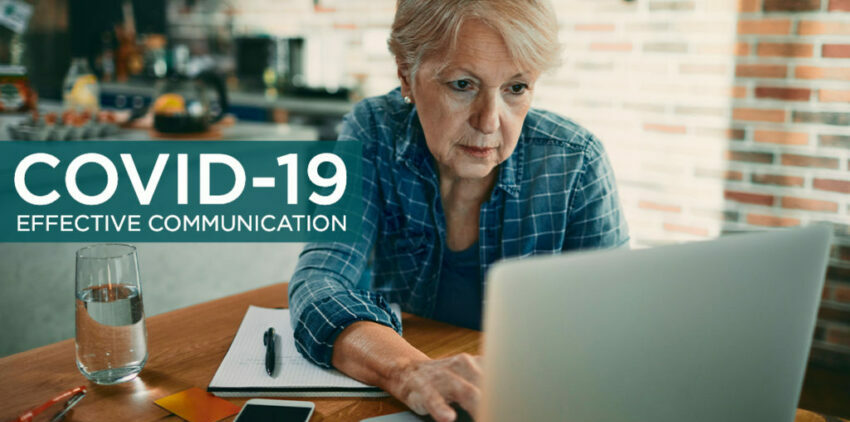Request A Demo
Get a closer look at how we can help you engage with success.
Tips and Cheat Sheets

In the unfortunate event that a case of COVID-19 has occurred at your community, here are some communication steps you can follow to assist in responding quickly and effectively.
Based on your community’s structure, the Core Team Members should include some combination of the following:
Appoint one team member to coordinate team’s activities and designate a spokesperson.
The early stages of a crisis are often defined by confusion, rumor, speculation and a lack of verified information. Obtaining the actual facts is a key part of assessing the situation and developing a community’s response. Using your community’s standard incident report, gather as many facts as possible.
Who to Notify?
Beyond your engagement with the CDC, local health authorities and family, you need to be prepared to communicate to the following audiences, and remember to check the accuracy of your contact information:
Determine which forms of communication are most effective for your community to reach intended audiences. We recommend using a combination of these channels:
This statement should be used for all audiences. It’s important to maintain consistent and clear messaging throughout the lifespan of a crisis to help achieve understanding and mitigate rumors. Remember to adhere to the factual information, avoid opinion and have your legal counsel review/approve.
Example:
Despite extensive precautionary measures and strict adherence to guidelines issued by the CDC and our local health authorities, a [team member/resident] at [community] was recently diagnosed with COVID-19. We deeply regret any concern or uncertainty this may cause residents, team members and their loved ones during this challenging time. As an employer and caregiver, we give the highest priority to the safety and well-being of those who live and work here – this was true before COVID-19 and will remain so afterward. We continue to work diligently with health officials to examine where this person may have been exposed, either on campus or in the greater community, and will take all necessary actions to limit further risk or spread. We continue to closely monitor other residents and team members for symptoms and will share any updates as appropriate.
The following are common questions you should be prepared to answer:
Your frontline staff are likely the first people who will field questions regarding this situation. Prepare them will simple messages directing them to officials who have been designated to address the situation.
Once you have your official statement prepared, take these following actions to distribute your statement as quick as possible.
NOTE: For this situation, the Q&A should be used as a reference document for leadership. Based on the audience, use judgement on what additional details (if any) should be shared.
Closely monitor all social media including rating/review sites (i.e. Google, Caring.com). If someone leaves a comment or has a question, it is important to respond quickly and accurately. Remember to not waiver from the approved messages. And in some instances, you may have to direct people to your website or approved spokesperson to manage the situation.
Because this is a very fluid and evolving situation, continue monitoring details from local authorities and health officials. As more information is learned, you will likely need to adjust your statement and prepared messaging.
Contact us for additional assistance and guidance.
Get valuable insights delivered to your inbox